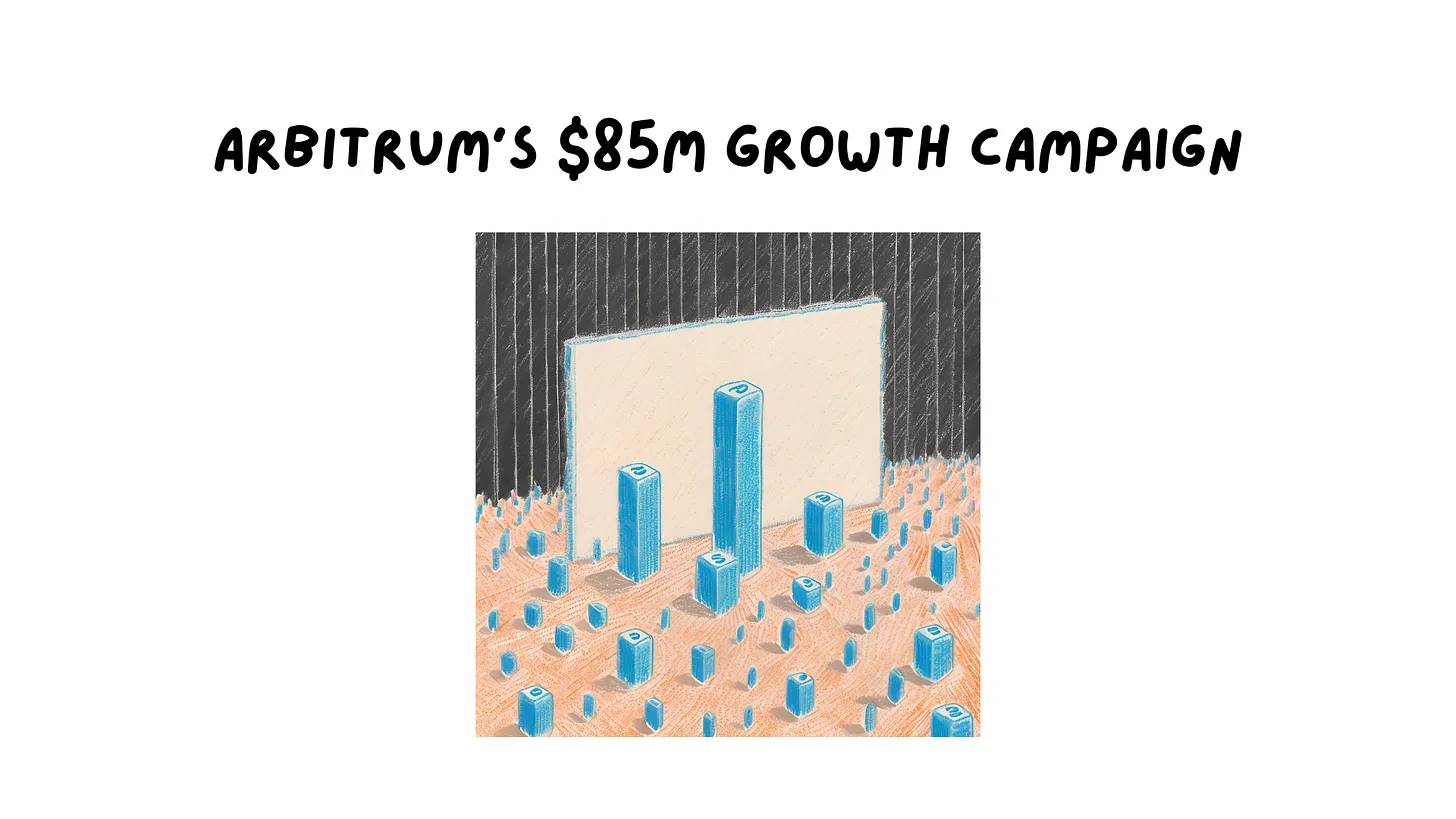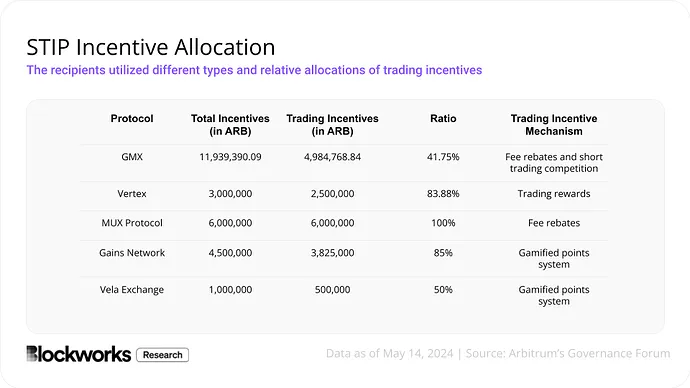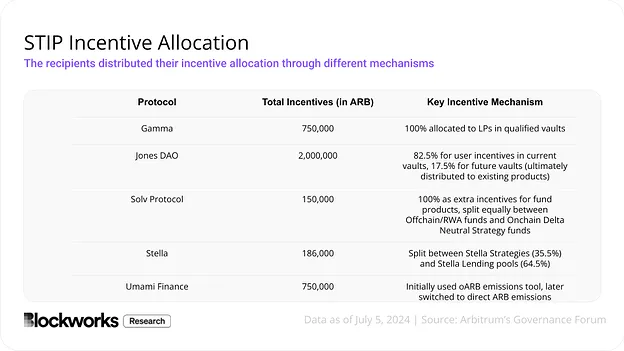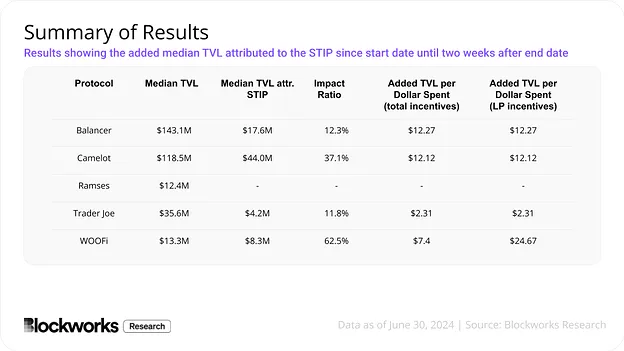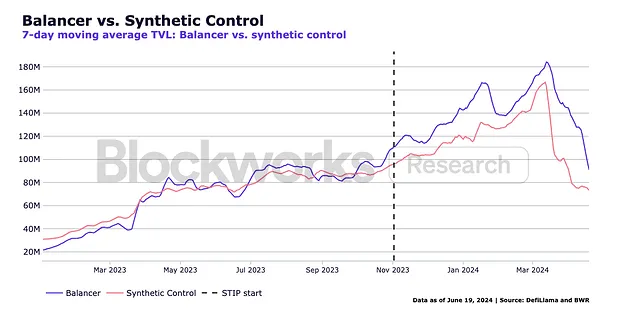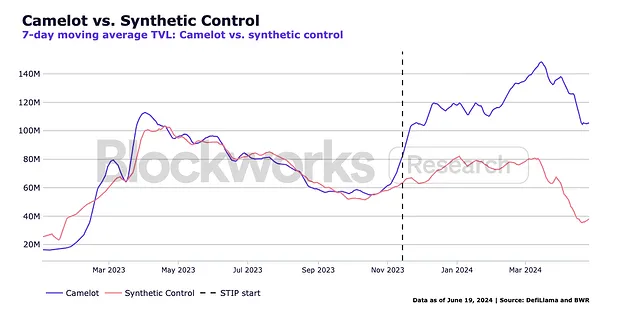پیسہ ادھر ادھر پھینکنا ترقی کے برابر نہیں ہے۔ آربٹرم کے 85 ملین ماحولیاتی ترغیب پلا کی تاثیر کیا ہے؟
اصل مضمون بذریعہ: Kerman Kohli
اصل ترجمہ: TechFlow
Imagine if you were a business and launched a promotion that promised $3 in value for every $1 spent. And anyone could take advantage of this offer, no strings attached. Your grandma, the homeless person on the street, a well-paid executive, or an average middle-class person would all qualify.
What do you think will happen? Well, the people who need the money most, and who are also unlikely to be repeat customers, will flock to your store, quickly draining your funds or inventory until you can no longer maintain the offer.
The good news is that the real world isn’t like this, and the free market will quickly eliminate such businesses.
The bad news is that the crypto industry is indeed like that, and the free market continues to drive capital inflows into it.
تعارف
The above scenario is essentially what Arbitrum did, with $85 million in funds involved, which ultimately resulted in a $60 million loss. Let’s dive into what exactly this scheme was, how it was structured, and what we can learn from it.
Arbitrum DAO structured this in a way that specific industries and their corresponding applications can earn ARB tokens to incentivize use on their platforms. The ultimate goal is to incentivize the use of these platforms so that the Arbitrum network earns more fees and the final protocol benefits. It turns out that one party wins here and the other does not (I am sure you already know who the loser is here).
This is a very high quality analysis with good measurement sophistication, and I would like to thank the Blockwork team for clearly articulating the why, what, and how of their approach.
You can view the results یہاں .
method
From a high-level perspective, you can break this activity down into two main components:
1. Create a baseline to understand what percentage of incentives can be attributed to spending compared to a baseline. They call this the “synthetic control” approach and it uses some complicated math. It’s not too important because no matter what our final number is, we’ll need to adjust it downward since not all results can be attributed to this single effort. You can read more about this in the original forum post.
2. Incentivize end users of applications in different areas on Arbitrum by giving them ARB tokens to improve their metrics. Three areas were selected (perpetual contracts, decentralized exchanges, liquidity aggregators). Each application was told how to best use these incentives.
I did find a few interesting excerpts that I thought I’d share here for you to judge for yourself:
-
Many agreements missed several biweekly reports or did not issue a report at all. About 35% of STIP recipients did not issue a final report.
-
“Protocols rarely strictly explain why a certain amount of incentives should be allocated to them when applying for STIPs. Instead, the final allocation is usually the result of back-and-forth communication between the protocol and the community, often resulting in allocations similar to ‘we think this request is too big/too small’.”
Anyway, below, Ive attached screenshots of the different categories showing the amounts and mechanisms for spending (no screenshots of methodology for the DEXs, but basically they just incentivize liquidity). The key thing to remember here is that 1 ARB is roughly equivalent to 1 USD. So yes, there are millions of dollars being distributed here.
result
I divided the results into two parts because this experiment aimed to understand two aspects:
1. The impact of these incentives on applications
2. The impact of these incentives on sorter revenue
Well start with the first one, because it makes for a slightly happier story. If we start from first principles, what do you think would happen if someone gave you free money to promote your business? Typically, business improves – at least for a while. Thats what we saw overall in this experiment.
Let’s start with Spot DEX, whose results seem pretty good on the surface:
Basically, we see that for every $1 spent, the TVL (total value locked) ranges from $2 to $24, which sounds good. However, we need to ask the real question – how much of this is being retained? This is where it gets a little tricky. Balancers TVL has basically dropped since the rewards ended, which is obvious in this chart:
Camelot, however, has managed to retain some of this TVL! I’m not sure why there is a difference in retention between the two protocols, but if I had to guess, I think it might have something to do with how they run their incentive programs and the types of users they attract. This is something I have flagged and will analyze in a future article.
Now that you understand some of the micro details, lets zoom out and understand how this works for the application and the three important top-level categories (spot volume, perpetual volume, and lending). Ill show you the key charts. Ive made some annotations on them to help with understanding, so follow along.
-
I have drawn two red vertical lines marking the start and end of the program. This will help us understand the timeframes involved.
-
I then drew multiple horizontal lines to understand the different metrics and visualize the impact of the program on these metrics over its lifetime.
-
The first blue line shows a huge spike in TVL (no doubt about it), but then it drops almost back to where it was at the start of the program, indicating little stickiness!
-
The second line is spot volume. I want to pause here and mention that unlike TVL (supply side), spot volume represents demand. As we can see, demand is stable at best, but actually decreases at the end of the program!
-
The third line is outstanding loans, which is also a demand driver, but it is unchanged. While there is no incentive for any lending protocol, I think it is another strong indicator of demand. In fact, it is down throughout the program!
So what can we conclude from all of the above? Basically, Arbitrum spent $85 million on these other businesses to boost their supply-side metrics (which clearly worked), but without the corresponding demand to absorb this TVL and tighter liquidity, these efforts were rendered useless. Essentially, you could say that this money was wasted and given to farmers chasing short-term profits. At least some protocols have higher TVL and higher token prices, making some people richer in the process.
Speaking of demand-side metrics, these activities are certainly good for the chain and lead to increased revenue for all of these transactions, right?
In reality, this is not the case.
The reality is not like this at all.
Here is a chart of sorter revenue from January 2022 to July 2024. The big move around April is when cryptocurrencies started to surge, and synthetic controls helped us adjust for that.
On the surface, we can see revenue rising, peaking at $400,000 per day in some months. Here’s a clearer chart showing the impact just for Arbitrum, and taking synthetic control into account:
So what is the area under the curve? $15.2 million. If you take out the synthetic controls, the total revenue for the sequencer is $35.1 million. Considering we spent $85 million, we are still far from where we expected to be!
Learning Summary
To summarize all of the above:
-
Arbitrum decided to spend $85 million to incentivize activity on its network in order to boost market share and revenue.
-
They do this by providing free tokens to applications and protocols, which are then distributed to end users.
-
After analysis, it was found that these free tokens mainly provided supply-side drivers, while there was almost no change on the demand side.
-
A deeper analysis revealed that all of this activity generated $60 million less in sequencer revenue than was spent.
My takeaway from this is that supply-side incentives are equivalent to burning money and should not be taken lightly unless you have a supply-side problem (and usually the real problem is demand).
The second point is the premise I mentioned at the beginning of the article: if you randomly give funds to strangers without discerning their identity and background, the results you will get in the end will be very bad. Those protocols that continue to provide funds to users without understanding who they are and their purpose will eventually fall into the situation described at the beginning of this article.
Let’s imagine that if this incentive program can identify the recipients of these tokens through the permissionless identity of the wallet, and set the following criteria:
-
Is this user actually using a DEX, or is this a completely new wallet?
-
What is the net worth of this wallet and are they a potentially valuable wallet?
-
How much does this wallet spend on fees? Do they stick with the platform they use?
-
Is this address using all the projects that are about to launch tokens? They might be a money grabber.
What do you think the end result will be?
This article is sourced from the internet: Throwing money around does not equal growth. What is the effectiveness of Arbitrum’s 85 million ecological incentive plan?
متعلقہ: غیر مرئی انفراسٹرکچر کا مسئلہ 02|OKX Web3 ٹیم کے ساتھ ڈائیلاگ: API کیوں بنائیں؟
API کی تعمیر کا کرپٹو انڈسٹریز کا فروغ نہ صرف تکنیکی انٹرآپریبلٹی اور صارف کے تجربے کو بہتر بنائے گا بلکہ ماحولیاتی نظام کی توسیع اور وکندریقرت کو بھی فروغ دے گا، اس طرح Web3 ٹیکنالوجی کو بڑے پیمانے پر مقبولیت حاصل ہوگی۔ ایک معروف سافٹ ویئر آرکیٹیکٹ اور ٹیکنالوجی کے ماہر جم ویبر نے ایک بار کہا تھا، ایک اچھا API ایک واضح گفتگو کی طرح ہونا چاہیے، نہ کہ حکموں کی سیریز۔ لہذا، API ایک تکنیکی انٹرفیس ہے اور ڈویلپرز کے درمیان ایک مواصلات اور مکالمہ بھی ہے، لہذا واضح API ڈیزائن اور دستاویزات بہت اہم ہیں۔ ون اسٹاپ Web3 پورٹل کی قیادت کرنے والی صنعتوں کے طور پر، OKX Web3 Wallet API کی تعمیر کی رہنمائی جاری رکھے ہوئے ہے اور صنعت میں ایک ناگزیر ملٹی چین Web3 ڈویلپمنٹ انجن بن رہا ہے۔ Web3 ڈویلپمنٹ سلوشنز کا ایک مکمل سیٹ فراہم کر کے – OnchainOS، اس نے زنجیروں اور خدمات تک رسائی میں معیاری کاری حاصل کر لی ہے،…
